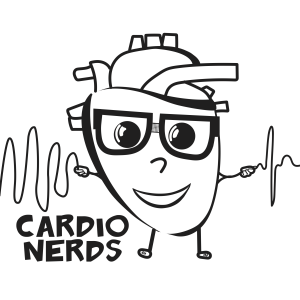
Cardionerds: A Cardiology Podcast
Health & Wellness Podcasts
Welcome to CardioNerds, where we bring you in-depth discussions with leading experts, case reports, and updates on the latest advancements in the world of cardiology. Tune in to expand your knowledge, sharpen your skills, and become a true CardioNerd!
Location:
BALTIMORE, MD
Genres:
Health & Wellness Podcasts
Description:
Welcome to CardioNerds, where we bring you in-depth discussions with leading experts, case reports, and updates on the latest advancements in the world of cardiology. Tune in to expand your knowledge, sharpen your skills, and become a true CardioNerd!
Twitter:
@Cardionerds
Language:
English
Contact:
8458251437
Website:
https://www.cardionerds.com/
Email:
cardionerds@gmail.com
439. Atrial Fibrillation: Anti-Arrhythmic Drugs in the Management of Atrial Arrhythmias with Dr. Andrew Epstein
Duration:00:47:13
438. Heart Failure: Perioperative Heart Transplant Management with Dr. Dave Kaczorowski and Dr. Jason Katz
Duration:00:33:38
437. Atrial Fibrillation: The Diagnosis and Management of Atrial Flutter with Dr. Joshua Cooper
Duration:00:30:07
436. Heart Failure: Pre-Heart Transplant Evaluation and Management with Dr. Kelly Schlendorf
Duration:00:32:11
435. Atrial Fibrillation: Chronic Management of Atrial Fibrillation with Dr. Edmond Cronin
Duration:00:47:54
434. Heart Failure: Advanced Therapies Evaluation with Dr. Michelle Kittleson
Duration:00:14:01
433. The Evolution and Future of Cardio-Obstetrics with Dr. Afshan Hameed, Dr. Doreen DeFaria Yeh, Dr. Garima Sharma, and Dr. Rina Mauricio
Duration:00:31:35
432. Journal Club: The TRANSFORM-AF Trial with Dr. Sanjeev Saksena and Dr. Varun Sundaram
Duration:00:21:38
431. Atrial Fibrillation: Acute Management of Atrial Fibrillation with Dr. Jonathan Chrispin
Duration:00:18:40
430. Women Leaders in Advanced Heart Failure and Transplant Cardiology with Dr. Mariell Jessup and Dr. Nosheen Reza
Duration:00:46:18
429. Walking Both Paths: A Physician and Patient in Adult Congenital Heart Disease with Dr. Leigh Reardon
Duration:00:44:45
428. Atrial Fibrillation: The Impact of Modifiable Risk Factors and Lifestyle Management on Atrial Fibrillation with Dr. Prash Sanders
Duration:00:17:48
427. The Approach to Asymptomatic Severe Aortic Stenosis with Dr. Parth Desai and Dr. Tony Bavry
Duration:00:18:04
426. Case Report: A Ruptured Saccular Aortic Aneurysm into the Right Ventricle – University of Tennessee, Nashville
Duration:00:36:09
425. Case Report: The Hidden Culprit – Unraveling the Cause of Malignant Ventricular Arrhythmias in a Young Adult – Trinity Health Livonia Hospital
Duration:00:27:21
424. Treatment of Transthyretin Amyloid Cardiomyopathy (ATTR-CM) with Dr. Justin Grodin
Duration:00:44:38
423. Case Report: The Malignant Murmur – More Than Meets the Echo in Nonbacterial Thrombotic Endocarditis – Baylor College of Medicine
Duration:00:16:03
422. Diagnosis of Transthyretin Amyloid Cardiomyopathy (ATTR-CM) with Dr. Venkatesh Murthy
Duration:00:13:38
421. Case Report: Switched at Birth: A Case of Congenital Heart Disease Presenting in Adulthood – New York Presbyterian Queens
Duration:00:29:12
420. Cardio-Rheumatology: Cardiovascular Multimodality Imaging & Systemic Inflammation with Dr. Monica Mukherjee
Duration:00:17:54